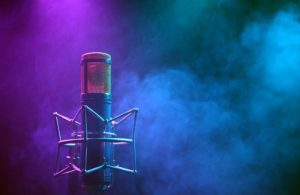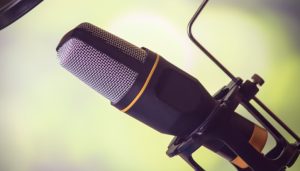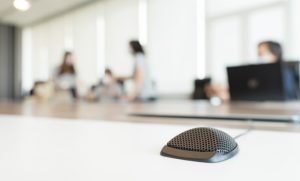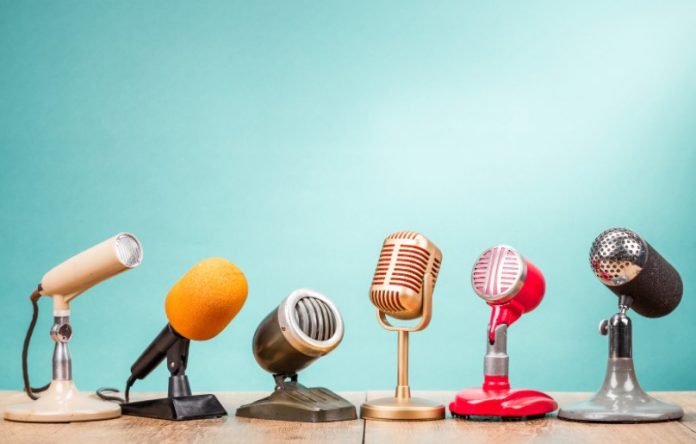Table of Contents
All the talent in the world cannot compensate for a substandard microphone. The same can also be said for selecting the wrong type of microphone, which can be just as problematic.
Unfortunately, this is something many DJs, artists, and performers find out the hard way. Particularly where newcomers to making and mixing music are concerned, who may underestimate the importance of choosing the right tool for the job. With microphones, quality counts most. Unless a microphone is designed and manufactured to the highest quality standards, the rest is inconsequential.
After quality, what matters most when choosing a microphone is its specification, something referred to as the ‘Polar Pattern’ of a microphone, which is where things get a little more complicated.
By familiarizing yourself with the most common Polar Pattern configurations, you will be in a much better position to pick up your perfect microphone.
What Are Polar Patterns?

The term ‘Polar Pattern’ simply refers to how sensitive a microphone is to sounds it picks up from a variety of angles. The Polar Pattern of a microphone subsequently determines whether it is a ‘Cardioid microphone’, ‘Omnidirectional microphone’, ‘Bidirectional microphone’, or any other type of microphone.
Every Polar Pattern is designed with a specific application in mind. Both for studio use and when performing live, the Polar Pattern of a microphone will determine how much sound is picked up from a range of angles. Hence, selecting a microphone with the Polar Pattern is essential in order to ensure it picks up only the sounds you want it to.
Some Polar Patterns are better than others for laying down drum tracks, for projecting vocals when performing live, or for recording guitars. Along with enhancing the quality of the sound in general, choosing the right microphone can reduce the amount of work needed to mix and edit the tracks you record.
What Polar Pattern Should I Use?


Exactly which microphone is ‘best’ for any given purpose is a contentious issue; this is due to the fact that some people prefer the way some microphones sound in certain situations to others.
Over time, experimenting with different types of microphones and Polar Patterns will help you come up with your signature sound. That said, the overwhelming majority of microphones are designed and manufactured with specific applications in mind.
Being mindful of these applications can help you get to grips with the basics of the different types of microphones until the time comes to start experimenting.
A few examples of where, when, and how the main types of microphones are ‘supposed’ to be used:
1. Omnidirectional Microphones


- When recording several singers or instruments at the same time using a single microphone, such as when conducting an interview, recording a podcast, or tracking a choir.
- Where instruments like acoustic guitars or pianos are being recorded, where the spacious ambiance of the room needs to be captured.
- In instances where a sound source needs to be captured that is moving around at the time, such as a theatre performance.
2. Figure Of 8/Bidirectional Microphones
- Useful for capturing conversations between two people, when the voices of those taking part need to be recorded simultaneously.
- When two separate sound sources (such as vocals and an acoustic guitar) need to be captured at the same time using the same microphone.
- For various types of stereo recording purposes – particularly when laying down drum tracks.
3. Cardioid Microphones


- For capturing vocals in a recording studio when complete isolation from all other sounds in the room is essential.
- To enable vocals and instruments to be captured and projected during live performances while preventing issues with feedback.
- For more accurate drum mixing by close-microphoning drum shells to isolate the sound and minimize bleed.
4. Supercardioid Microphones
- When recording in rooms with particularly poor acoustics, or where the presence of ambient background noise could compromise the quality of the recording.
- For capturing electric guitars with heavy distortion and/or high gain, providing enhanced isolation and reducing ambient reflections in the room.
- An effective choice for reducing or eliminating bleed by close-microphoning snare drums.
5. Hypercardioid Microphones
- Where sounds need to be captured with pinpoint precision, free of any additional sounds or unwanted ambient noise from the surrounding area.
- For close-microphoning drums and other instruments in a live performance setting.
- When recording in garden rooms with particularly poor acoustics, or where the presence of ambient background noise could compromise the quality of the recording
Final Word…
Once again, it is important to emphasize the criticality of choosing a microphone comprising the highest-quality components and materials. Irrespective of the type of microphone you choose, it is ultimately its quality that will determine its performance.
If in doubt, consult with your preferred retailer such as djkit.com and ask for their suggestions, in accordance with your requirements and your personal budget, where necessary you could also take up the option of DJ finance.






































